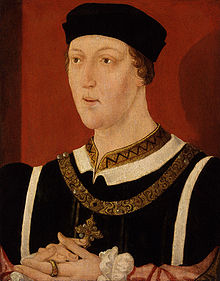Henry VI, King of England, Wars of the Roses, Lancastrian dynasty, House of Lancaster, House of York, English history, medieval England, biography, reign, mental illness, political turmoil, legacy
Introduction
Henry VI of England, a monarch whose reign was fraught with political turmoil, internal strife, and personal tragedy, remains one of the most intriguing figures in English history. As the last Lancastrian king, Henry VI presided over a period of upheaval known as the Wars of the Roses, a bloody conflict that plunged England into chaos. In this article, we delve into the life, reign, and legacy of Henry VI, shedding light on the complexities of medieval monarchy and the impact of mental illness on governance.
Early Life and Ascension to the Throne
Henry VI was born on December 6, 1421, at Windsor Castle, the only child of King Henry V of England and Catherine of Valois. He inherited the throne at the tender age of nine months following the death of his father, making him the youngest king in English history.
Due to his young age, Henry’s early reign was dominated by regents and councilors who sought to consolidate power in his name. As he grew older, Henry struggled to assert his authority and maintain control over his kingdom, leading to a period of political instability and factionalism within the English court.
Also Read: Caligula: The Mad Emperor of Rome and His Infamous Reign
The Wars of the Roses
The Wars of the Roses, a series of dynastic conflicts between the rival houses of Lancaster and York, defined much of Henry VI’s reign and shaped the course of English history. The conflict was fueled by competing claims to the throne and simmering tensions between the Lancastrian and Yorkist factions.
Henry VI’s weak and indecisive leadership only served to exacerbate the tensions between the warring factions, as rival nobles vied for influence and power at court. The Lancastrians, led by Henry’s queen, Margaret of Anjou, clashed with the Yorkists, led by powerful nobles such as Richard, Duke of York, and his son Edward, later known as Edward IV.
The conflict reached its climax with the Battle of Towton in 1461, a decisive Yorkist victory that resulted in Henry VI’s deposition and the establishment of the Yorkist dynasty. Despite brief periods of Lancastrian resurgence, Henry VI spent much of his later life in exile or captivity, a broken and defeated monarch.
Mental Illness and Personal Tragedy
Henry VI’s reign was further complicated by his struggles with mental illness, which historians believe may have been schizophrenia or bipolar disorder. He experienced frequent bouts of depression, paranoia, and religious fervor, leading to periods of incapacitation and erratic behavior.
The king’s mental instability only served to weaken his grip on power and fuel the ambitions of his rivals, who sought to exploit his vulnerabilities for their own gain. The personal tragedy of Henry’s reign was compounded by the loss of his only son and heir, Edward of Westminster, who was killed in battle at the age of 17.
Legacy and Historical Assessment
Henry VI’s reign is often remembered as a period of political turmoil and instability, marked by civil war, rebellion, and dynastic conflict. Despite his best intentions, Henry’s weakness as a ruler and his inability to assert control over his kingdom ultimately led to the downfall of the Lancastrian dynasty and the rise of the Yorkist kings.
In hindsight, Henry VI’s reign serves as a cautionary tale of the perils of weak leadership and the consequences of unchecked ambition. While he may have been a pious and well-meaning monarch, Henry’s inability to navigate the treacherous waters of medieval politics ultimately sealed his fate and contributed to the demise of his dynasty.


1 thought on “Henry VI of England: The Tragic Reign of a Weak King”